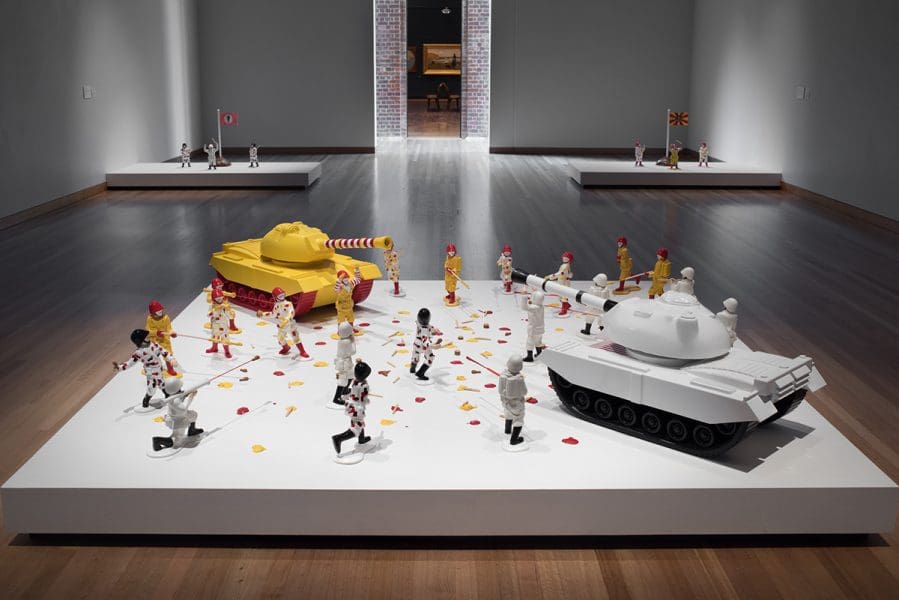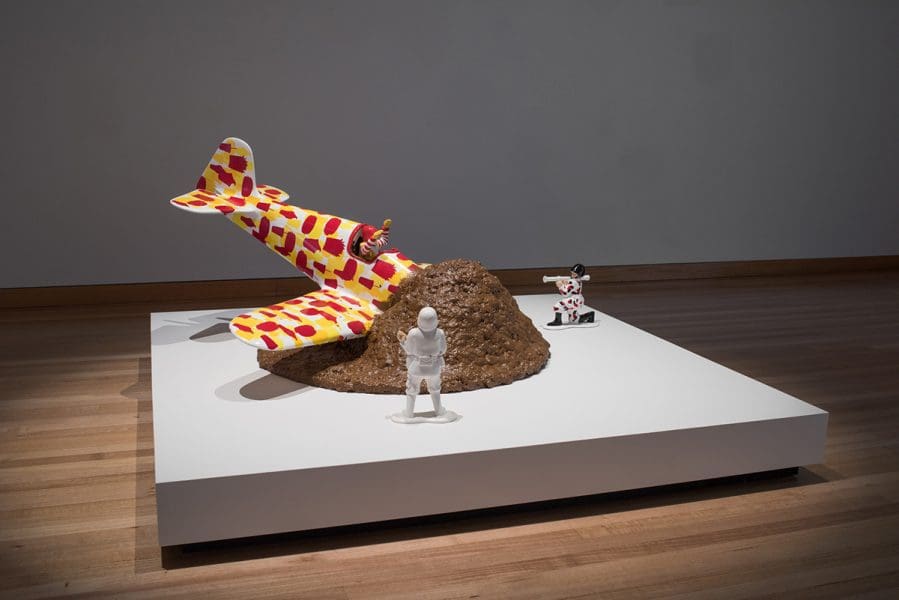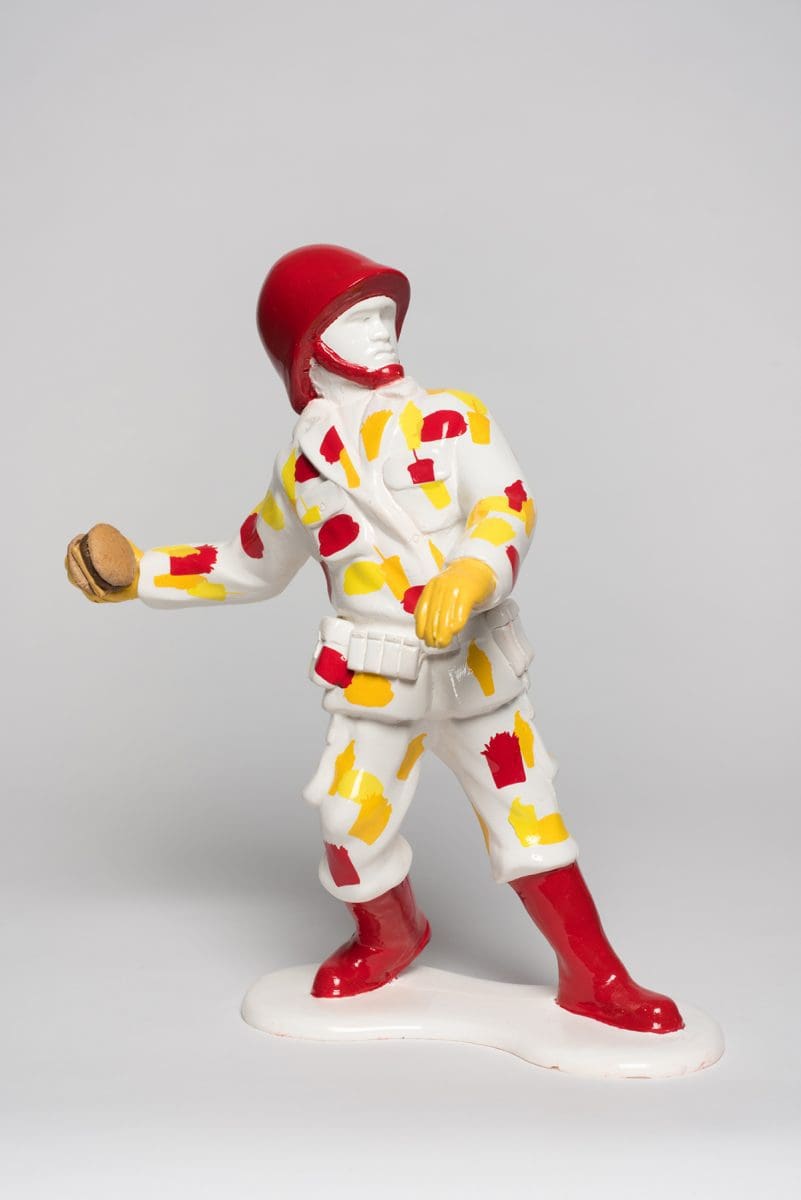
Making Space at the Table
NAP Contemporary’s group show, The Elephant Table, platforms six artists and voices—creating chaos, connection and conversation.




Jud Wimhurst comes from a long line of men who like sheds and power tools. He makes most of his highly polished sculptures from scratch and on occasion even builds specialised equipment to create his pieces. Although designed to appear mass-produced, Wimhurst’s work is meticulously handcrafted using materials usually associated with commercial industry – wood, fibreglass, resin and lacquer.
For several years, Wimhurst pressed his own skateboards and crafted wheels from resin, not for functionality, but rather for display as art pieces. As a result, Wimhurst’s studio has slowly become a conflation of popular culture and fine craftsmanship.
Following the lead of Wes Humpston and Jim Muir and the skateboard deck art they created for Dogtown Skateboards in the 1970s, Wimhurst began to use the skateboard deck as a canvas to illustrate his ideas. Particularly interested in the themes of consumerism, branding and mortality, Wimhurst has adorned his handcrafted boards with glossy images of lobsters, chandeliers and bowler hats to question the inner workings of seemingly disparate spheres of culture. In 2014, he even tipped his hat to the trademark styles of van Gogh, Dali and Lichtenstein in a skateboard series titled ART PROS.
“I used the skateboard to talk about culture, in particular high culture versus lowbrow culture,” Wimhurst says. “It is important to me that my sculptures look as though they belong to a consumerist world, so I work hard to make them look glossy and highly finished as though they have come from a factory somewhere and are not completely made by hand in my backyard shed.
I think this adds to that idea of artifice and illusion and the object as a superficial thing until we assign meaning to it.” This is especially true of the collections of intricate masks and helmets Wimhurst has crafted for earlier exhibitions, Masks for the Modern Tribe and Warfareware. Not just hollow fibreglass shells, in the gallery setting Wimhurst’s helmets become loaded symbols of safety, security and protection.
As the 2016 recipient of Bendigo Art Gallery’s Going Solo initiative, Wimhurst takes his favoured themes of consumerism and pop culture further in Gimme Freedom (or gimme death), a major sculptural installation exploring identity, nostalgia and choice.

Moving away from the skateboard form and building on the masks and helmets referenced in previous works like the spectacularly antlered Safe/ Secure (urban voodoo helmet), 2014, the sculptures in this exhibition take on the iconic shape of plastic toy soldiers. Here, they are stripped of their khaki colouring and whitewashed in a glossy finish. Splashes of red and yellow paint decorate their oversized bodies, colours immediately recognisable for their association with well-known fast food branding.
“The work is about advertising and how it influences our lives, our identity, but also politics and our beliefs,” Wimhurst explains. “Advertising and marketing have hijacked colours, patterns and colour combinations, making it almost impossible as an artist to use these in a work without it operating as a trigger in the minds of the viewer for the corporations who use them.”
Arranged in theatrical scenes throughout the gallery, the soldiers congregate in opposing sides, turning their weapons and tanks on each other. Only here, war is waged with ketchup and mustard rather than bullets. Wimhurst has infused these works with dark humour. “The objects I am particularly interested in are those that have layers of meaning or can operate as a sort of metaphor,” he says. Here the soldiers throw burgers, not grenades, and their guns are not the complex machines of modern warfare but drinking straws impotently spurting molten cheese.
There is a surreal contradiction in Wimhurst’s sculptures as they represent an inherently messy situation pristinely crafted from dependable materials and positioned in a neatly controlled environment. Like his finely constructed skateboards, masks and helmets, Wimhurst’s soldiers seize the sense of security our consumer culture offers. We are given aesthetically pleasing objects with appealing shiny surfaces, yet how far beneath the surface does that pleasure go? Gimme Freedom (or gimme death) reflects on this and drives us to question our affiliation with branding and whether material goods can really deliver on the happiness they promise.
Jud Wimhurst: Gimme Freedom (or gimme death)
Bendigo Art Gallery
5 November – 12 February